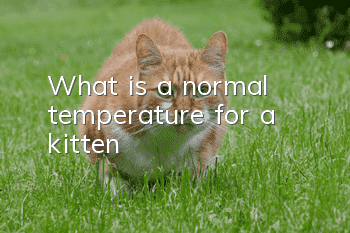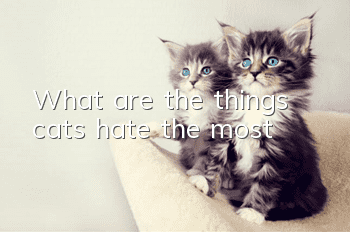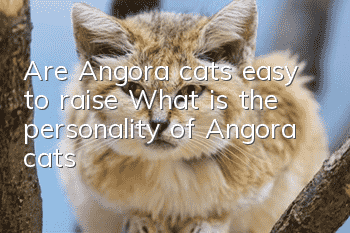A Cat's Life: A Guide to Feeding Young, Adult and Old Cats

A cat's life also goes through various stages such as childhood, adulthood, old age, etc., and compared with human life, a cat's time will be much shorter. Therefore, many pet owners have to go through the birth, old age, illness and death of their cats. Pet owners cannot prevent their cats from leaving, but they can use the knowledge they have learned to take meticulous care of their cats.
1. Key Instructions on Feeding Young Cats
1. Provide basic nutrition
Just like adult cats, kittens also need six basic nutrients: water, protein, fat, carbohydrates, minerals and vitamins.
2. More nutritional supply
In the kitten stage, the demand for protein is 2.1 times that of adult cats, and the demand for calcium is 5 times that of adult cats, because their body growth, fur, muscles and bones require more nutrients to support their growth.
3. Nutritional intake period
Generally speaking, kittens begin to enter sexual maturity at 5-6 months. At 8 months, their teeth are the same as those of adult cats. At 9 months, their digestive systems have become adults. At 10-12 months, their nutritional needs are the same as those of adult cats.
4. Provide lactose-free milk
Once a kitten is weaned, she no longer needs milk. As the digestive tract of kittens develops, their ability to digest lactose gradually weakens. If you want to give milk to kittens after weaning, you should provide special lactose-free milk and fresh drinking water at any time.
2. Key reminders on feeding adult cats
1. Eat a nutritious diet
The nutrients required by adult cats mainly come from fat and protein. In cat food, fat should not be less than 10%, protein should not be less than 28%, carbohydrates should not be more than 30%, and water needs to be 50-70%. ml.
2. Naturally ingestible
Some cats have nutritional needs that cannot be obtained from natural food. For example, vitamin C does not need to be obtained from food, and vitamin K does not need to be obtained from food.
3. It is recommended to eat small and frequent meals
Since cats are born with weak gastrointestinal problems, there is a saying in traditional Chinese medicine that the spleen is the foundation of the day after tomorrow, and the spleen and stomach are related to each other from the outside to the inside. Therefore, in order for cats to maintain their long-term health, it is recommended to eat small amounts and often to take care of cats. Spleen and stomach.
3. Key suggestions for feeding elderly cats
1. Ability to digest and absorb
No matter how good and suitable the nutrition that elderly cats need is provided by owners of pet cats at home, if it is not suitable for the digestive tract of elderly cats, they will not be able to fully absorb it, and no matter how good the food is, it will be in vain, so the first focus should be nutrition. It can be absorbed by the digestive tract of elderly cats. It is best to eat foods that are light, crisp, easy to bite, and have high digestibility.
2. SpecialSpecial nutritional needs
It is best for cat owners to provide the special nutritional needs of elderly cats, such as adding food containing appropriate amounts of vitamins C and E, because vitamins C and E can slow down the rate of cell aging.
3. Pay attention to the phosphorus content
When cat owners feed elderly cats, it is best to limit the proportion of phosphorus, so that elderly cats can maintain good kidney function.
4. Both nutrition and appetite
When cats get old, their appetite will decrease with age. During this period, pet owners must not only consider nutritional issues during the feeding process, but also consider how to improve the cat's appetite. For example, you can choose cat food with a more fragrant taste to attract cats.
- Can kitten diarrhea heal on its own?
- How to correct a cat that scratches the ground next to its food bowl
- How to identify a false pregnancy in a female cat
- What to do if Birman cat has urinary stones. How to treat Birman cat to have urinary stones.
- What are the benefits of giving probiotics to cats?
- Why does my cat’s butt bleed?
- How to remove black lumps on cat's nose?
- Why do American Bobtail cats need to be neutered?
- Are Ragdoll cats suitable for novice owners? Things to note for newbies raising Ragdoll cats!
- Which pet attracts fleas the most? Take you through the life of a flea!



